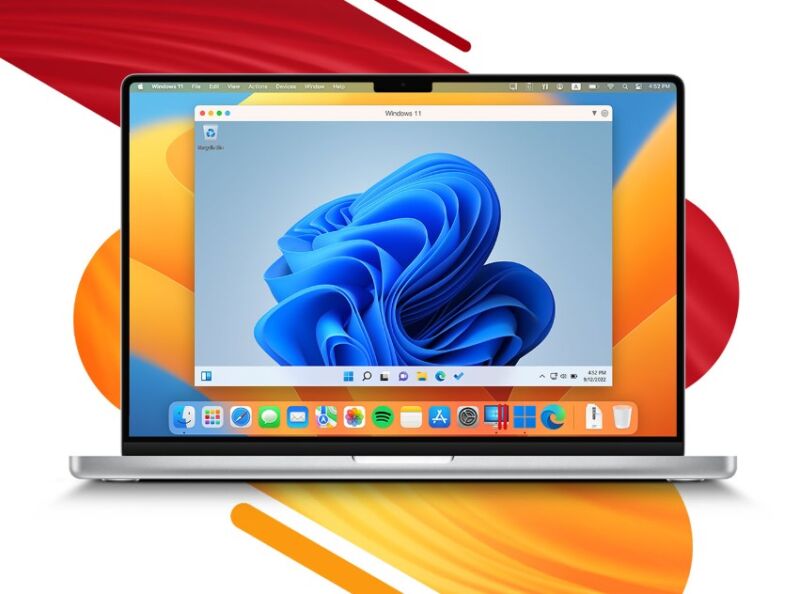Microsoft officially blesses Parallels as a way to run Windows on M1, M2 Macs

Enlarge (credit: Parallels)
In the absence of a version of Boot Camp that runs on Apple Silicon Macs, the best way to run Windows on them has been to use a virtualization app like Parallels or (more recently) VMware Fusion. The problem is that, until now, the Arm version of Windows that runs on Apple Silicon Macs hasn't technically been allowed to run on anything other than Arm PCs that come with it due to Microsoft's licensing restrictions.
These licensing problems haven't technically stopped people from running the Arm version of Windows on other hardware, including Apple Silicon Macs and the Raspberry Pi, but it could be more of an issue for IT managers who wanted to deploy Windows on Macs without worrying about legal liability.
Today, Microsoft is formally blessing Parallels as a way to run the Professional and Enterprise versions of Windows 11 on Apple Silicon Macs. The Arm version of Windows running under Parallels has some limitations—no support for DirectX 12 or newer OpenGL versions, no support for the Linux or Android subsystems, and a few missing security features. But it can run Arm-native Windows apps as well as 32- and 64-bit x86 apps thanks to Windows 11's Arm-to-x86 code translation features. Pretty much anything that isn't a game should run tolerably well, given the speed of Apple's M1 and M2 chip families, though there are still weird edge cases for specific apps, and hardware that requires specialized drivers to work in Windows may not support the Arm version.
Read 8 remaining paragraphs | Comments
from Tech – Ars Technica https://ift.tt/zWCGhKq
Comments
Post a Comment